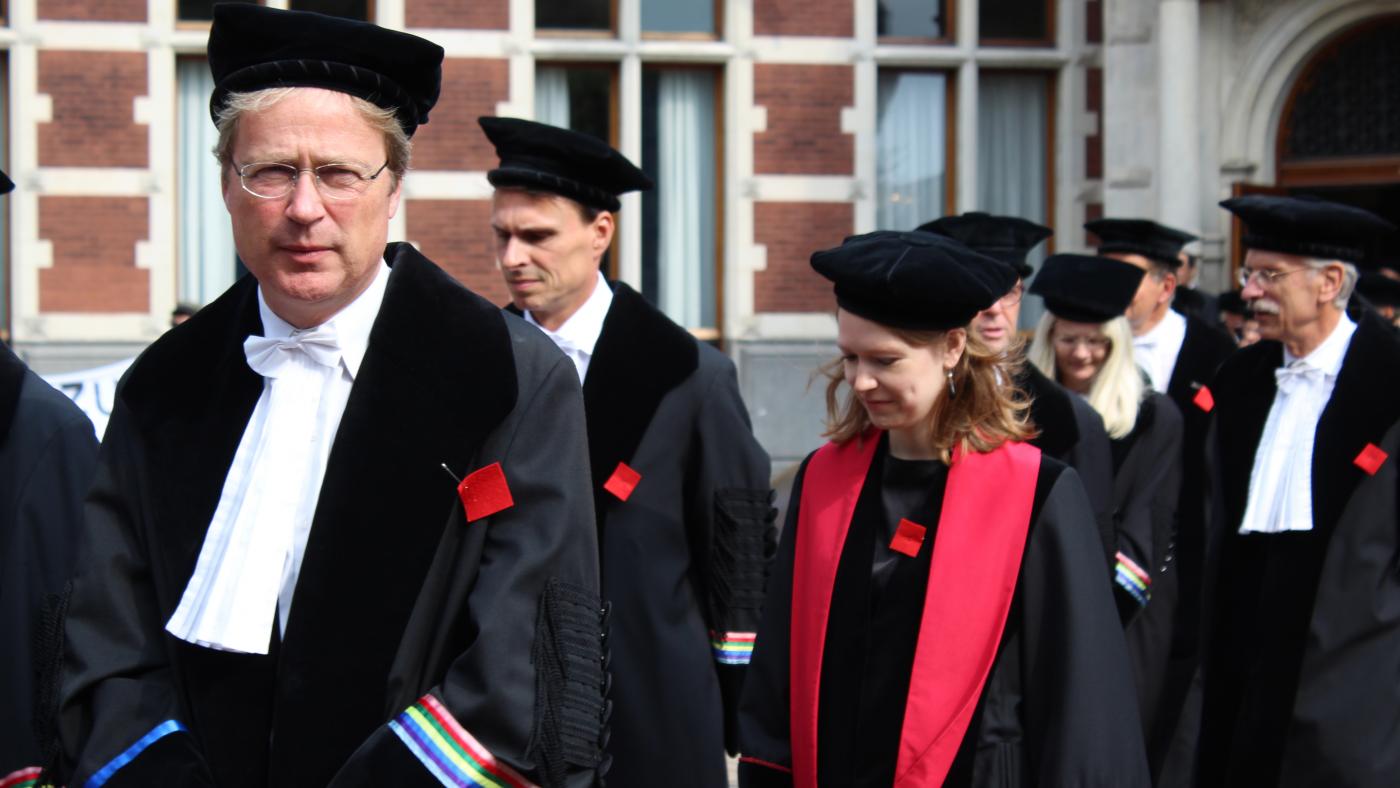The Executive Board wants to combat workload with concrete actions

A lot of the black robes were decorated with a red square made of fabric. The initiative came from the WOinActie group, who wanted to use it to bring attention to the work load in higher education. The group wants the Cabinet to discard the planned budget cut for higher education of 183 million, and instead invest one billion more.
Many of the students and employees had responded to this and wore the red square. The symbol originates from Canada where students use it to protest the debts. In French, the meaning of ‘carrément dans le rouge’ is being ‘in the red’ however, ‘carrément’ has the meaning ‘square’ as well.
Robe symbol of neutrality
Not everyone had pinned the square to their robe. Professor Krijn de Jong let the activists know that he did not want to participate. “You need to place it into perspective. Should we then take money from the health sector for the sake of higher education?” Wouter Dhert dean of veterinary medicine had other apprehensions. “The robe is a symbol of neutrality. You shouldn’t protest with it.”
The protest did have an effect. The gathering in the Dom church revolved mainly around work load and student stress. “The University has great ambitions”, said Vice-President Annetje Ottow, “But this hard work also has its downsides. Aren’t we running ourselves ragged and do we want too much?”
The work is never finished
Sociologist Tanja van der Lippe, who is researching the origin of the work load problems, made it clear that the increased work load is not only a personal problem, but that it is a societal issue as well. We are dealing with an unbalanced job market where one individual works hard and the other does not get a chance, she said. Society also demands that everything must be settled immediately and the boundaries between the private and the professional keeps fading. Because of this we are always ‘on’. After all, the work is never finished.
Van der Lippe referred to the division of the academic year as an example of increased work load. President of the Executive Board, Anton Pijpers, heard similar comments when talking to the employees about work load. “Our block system is being regarded as an immense burden. There is very little time to catch your breath.”
Concrete promises
The President of the Executive Board had some work load lunches with the employees together with Annetje Ottow. The way in which the employees honestly expressed their problems made an impact. A remark on the block system was one of these comments. The digital systems not being user-friendly, no replacements for long-term sick employees, or the time investment of applying for a research subsidy were also mentioned.
Pijpers mentioned concrete promises in his speech. For example, he promised that the University will no longer put a surplus on the budget into savings, but rather to use it for extra staff. He also wants to give temporary teachers a four-year contract instead of very short contracts. He did not comment on how you can hire staff for a longer period of time out of one-off budget surpluses.
Student stress
The employees were not the only ones dealing with stress, as the students also increasingly suffer from it. A Taskforce for Student Welfare must come up with proposals on how to solve this problem.
Additionally, he wants to work with research organisation NWO to relieve some of the pressure when applying for research, ask the Minister to take money from research organisations and give it directly to the university, a creation of a better national distribution of education should also be created.
This does not mean that the UU is becoming less ambitious. Pijpers argues to better balance top performances in education and research with relaxation, autonomy, fun, and in contact with each other. With this closing remark, he wished the academic community a good start to the academic year.